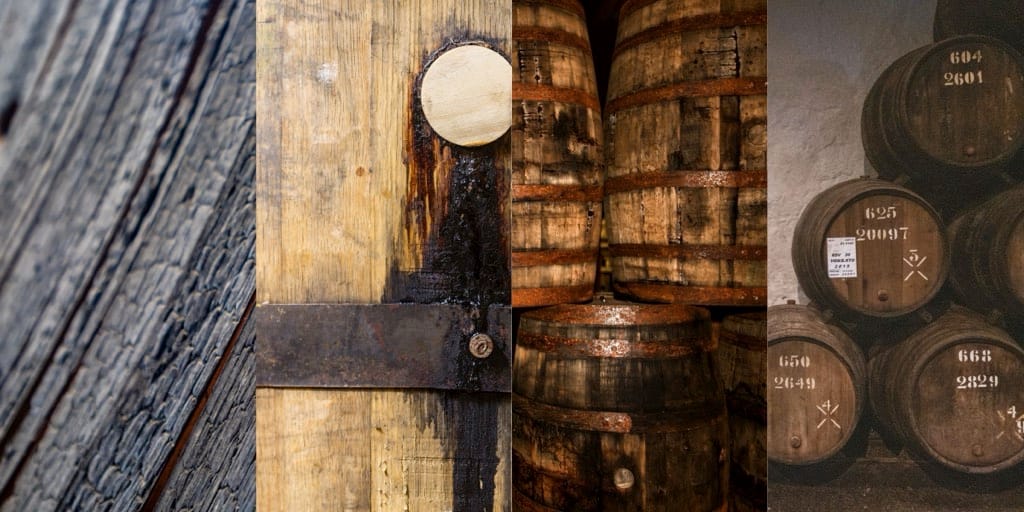Is Wood All You Got for Uniqueness?
In the past decade, American distillers have turned to unique cooperage to differentiate their whiskeys. In some cases, it’s worked wonderfully, especially when real experts in the management of maturate and blending are pulling the levers.

In a recent piece I wrote about Heather Greene, CEO of Milam & Greene Whiskey, she made a simple but excellent point: Bourbon has “become one thing,” while malt whiskies are much more diverse (i.e., those made in Scotland [Highlands, Lowlands, Speyside, etc.], Ireland, India, Japan and others). That diversity includes a wide range of cooperage—nearly always used and reused barrels—and of highly varied origins—Port, sherry, American whiskey, French wine casks, etc. And, of course, how the malt used to make them is treated (peated, not peated), not to mention each barley’s unique terroir, plus every whiskey’s aging climate.
The guardrails around bourbon are tighter, of course: Made only in the U.S. using a corn-centric grain bill, barreled only in new charred oak barrels, additive free, etc. Despite the explosion of smaller distilleries across the U.S., the vast majority of it comes from Kentucky (I don’t buy the 95 percent claim, but it’s at least 80 percent), which means that at least the aging experience is mostly the same, as is grain sourcing.
In the past decade, American distillers have turned to unique cooperage to differentiate their whiskeys. In some cases, it’s worked wonderfully, especially when real experts in the management of maturate and blending are pulling the levers.
Yet, cask finishing has become the de rigueur means of differentiation in American whiskey. So I sometimes as myself, “Is wood all you got?”
Other times secondary cask finishes aren’t so great. Some spirits are so overwhelmed by the second barreling that they’re all but obscured by the new wood. Such heavy-handed flavors are not only a turn off, they imply a lack of understanding of secondary cask finishing. Sometimes I’ll taste a cask-finished spirit and wonder if any consideration was given to whether those casks suit those specific spirits or how long those spirits should rest in them, and how to mingle, tank and bottle those spirits optimally. Often it seems as if a blender is merely adding whiskey to the cask of the moment, guessing on aging and then bottling it.
Yet, cask finishing has become the de rigueur means of differentiation in American whiskey. So I sometimes as myself, “Is wood all you got?”
Heather Greene says no. There are other ways to not become “one thing” in bourbon, and hers is a multifaceted approach. Milam & Greene’s official distillery is in Blanco, Texas, about 30 minutes north of San Antonio. Onsite are aging houses and a pot still set, and much of the grain used in distillate made there comes from Texas, which adds to its terroir. Bardstown Bourbon Co. custom distills and ages for M&G (unique grain terroir and climate), and Greene also sources aged whiskies from other American distilleries.
On top of that, Greene likes to mix things up in aging. If she believes a specific lot of barrels resting in Kentucky would benefit from time in the Texas heat, they’re sentenced to the heat of the Lone Star State. Same for barrels filled and aging in Texas. If they need a rest from the Lone Star sauna, they’re hauled to the comparatively cooler warmth and humidity of Kentucky.
And then there’s blending; lots of it using whiskies from all over. The results, Greene says, are whiskies that are “refined, subtle, elegant, luxurious, nuanced.”
I’ve only had a half dozen M&G whiskeys, and I agree with those descriptors. Though varied woods were used to make those blends, at no time do those barrels dominate those final products. They’re balanced from front to back palate, from grain to wood and from fruit to floral. Even at higher proofs, M&G’s whiskies are easy drinking, soft and subtle. Arriving at that end takes work and experience.
“I think consumers are looking for something else other than bourbon being that ‘one thing,’” Greene said in my recent story. “We want them to think that if they’re not in the mood for something really bold, they turn to a Milam & Greene whiskey to get something that’s refined and nuanced.”
The lady even blends words well.

